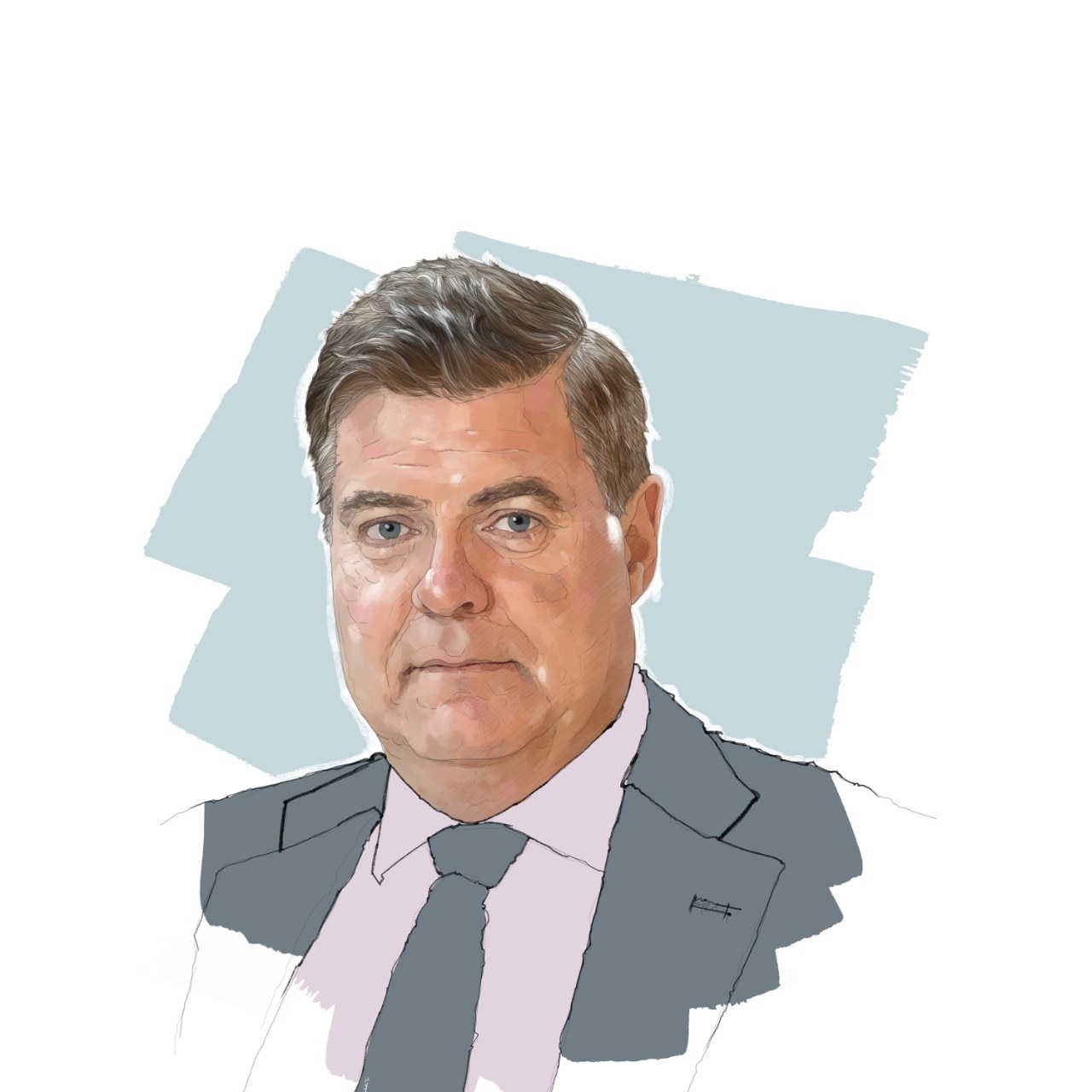Gregory Robinson Shares How the Future of Leadership is Changing

The founder of executive search and board advisory firm Blenheim Partners says that leadership is under the microscope like never before – and change is coming.
Current role: Managing partner, Blenheim Partners
Tenure: 10 years
Age: 53
Previous roles: Partner, Asia, Whitehead Mann; partner, Australasia, Korn Ferry; partner, United Kingdom and Europe, Norman Broadbent.
How do you define good leadership?
Good leadership is what inspires others to excel. It’ll challenge from within, make you think and help you develop your own skill set and take yourself and an organisation beyond those expectations. It’s not everywhere and when you do see it it’s highly recognisable. Often it comes with humility and an enormous level of engagement. Most good leaders have the ability to be quite self-aware and that’s what is significant. It’s not those beating their chest or making the loudest noise in the corner. Most of them are quietly spoken, self-confident and get others to follow.
Is this the time of the introverted CEO?
Yes. But they do have to communicate via Zoom or stand up in a large forum on a regular basis. Do they necessarily like it? No but it’s part of their journey and they’ve got to develop that skill set and façade. Introverted leaders are often more reflective and take the time to think through outcomes. You work with a lot of ASX-listed companies, helping them find executive teams and advising their boards.
What’s your opinion on the current state of leadership in corporate Australia?
Leadership is under the microscope. Employees are evaluating the bigger picture and their place in society. They want to be a part of an organisation that provides more than return to shareholders or profit. There are conversations about purpose and whether the leadership inspires confidence in assuring true alignment with their values.
This has accelerated in the past four or five years, hasn’t it?
It hasn’t been as strong as this. Having been in a pandemic for the past two years, leaders have had time to make it or break it. Are they going to leave a lasting legacy? And there’s the old adage about actions speaking louder than words. That cannot be more relevant than it is today.
Should every leader be thinking about his or her legacy?
Every leader will walk into a role inherited from their predecessor and set themselves a goal – as a minimum – to put that organisation or their team in a better position than what they inherited. In the past 12 months, there was only a 7 per cent increase in chief executive appointments. It’s not necessarily that significant but we anticipate it’s going to increase dramatically in the next 12 to 24 months. There’s been a 67 per cent rise in chair appointments year on year and that is significant.
What do you think is the reason for those numbers?
You’re probably going to keep your CEO to get through the difficult times but with chairs, we saw a number of factors. Some felt they’d done their role as best they could or maybe their skill sets weren’t applicable to this journey – and you’re talking everything from fighting to survive or moving into new opportunities because in some regards assets can be quite cheap out there. Others may have felt their strengths had been around governance and risk management, which have been critical, but they now need to look at opportunities from a real business sense. Some chairs may say to you the fun part of the role is starting to go – it’s heavily compliant. And others are just fatigued. They’re been doing this for two years, they’ve had more meetings in the boardroom than ever before and it’s time to take a break.
SEE ALSO: What Australian of the Year Grace Tame is Watching Right Now
They’re exhausted and they’re done?
Yes, fatigue is a big thing so a lot of chairs did make a change. You’re not going to take the risk of moving a CEO [at the same time] but now we’re being asked to look at a number of CEO roles in preparation for the change about to happen.
You’ve been described as having quite an unconventional approach to executive search. How so?
Every person who meets with us at this level is exceptionally good at presentation, talking and passing their message to us in how they want themselves to be perceived. We pull them apart by throwing them out of their comfort zone and asking some pretty direct and challenging questions. On paper, they can all do the role. I want to find out how they’re going to operate under a bit of pressure.
As someone who’s putting candidates forward, you play an important part in increasing diversity. How are you doing on that front?
Diversity is an essential characteristic to create the right team, there’s no doubt about it. But diversity comes under more than one heading. It’s dominated by gender – and there are reasons behind that and rightly so – but there’s also ethnicity, culture, language, age. If you look at gender among ASX 300 chief executives, females constitute between 6 to 7 per cent so it’s not breaking a lot of records and there’s been no significant change in the past 12 months.
Are you seeing a lot of resistance from the old guard?
No, I think there’s a lot more acceptance than there has been. But when you call a spade a spade, the number of non-Caucasian chairs has doubled from 1 per cent to 2 per cent in 12 months. If we’re looking at our trading markets and Australia is a major exporter of minerals, etc, why do we have such low numbers in terms of non-Caucasians in our boardrooms, to understand potential clients and customers? We have to examine that and move forward.
What are your thoughts on the Great Resignation?
It’s enormous in the United States. It’s predominantly been in mid-level and junior management but the themes have come through into senior management and we’re anticipating an enormous change. People are prepared to walk away from a major career in a bank or mining organisation, where they’ve been well compensated, to move into a not-for-profit, for example. There are those who are coming to the end of their executive career and calling it a bit earlier. In the US, parents who can’t get support at home are opting to leave the workforce to be at home with their children. There’s definitely that feeling in Australia.
There’s a lot of enthusiasm for hybrid work but I’m hearing that some CEOs are lamenting the decline of the office and would really rather everything went back to the way it was.
There are questions around productivity. Is it really true that because you work from home you are more productive? Some CEOs or leadership teams would argue they perform better and make decisions quicker working in an environment where people are closer and can engage. Others are questioning if they’re getting the best out of their team. Is this culture actually working remotely? Chairs are being very observant and watching how their chief execs lead and how they engage... Not all of them have done so well.
Is the power of the employee a talking point at C-suite and board level?
Yes, the game has changed. One, employees are getting phone calls. Two, they’re interested and curious to see what else is out there. Three, they’re evaluating. And four, remuneration is going up significantly. So are they in a good position? Yes. Can they negotiate other factors? Yes, they can. The pendulum has moved into the employees’ favour.
ESG is such a buzzword but is there more talk than action?
We’re starting to see the proof in the pudding. Those who follow results would definitely notice the level of questioning – the sets of numbers are put up but the second line of questioning is all around ESG. The rubber is starting to hit the road and people are being challenged around that a lot more.
What advice would you give an aspiring CEO?
The clock’s ticking. Ninety per cent of CEO appointments for top companies are for candidates aged 55 and under. For companies with greater market capitalisation, say the ASX top 50, they’re closer to 50. There’s an enormous amount happening in mergers and acquisitions, IPOs and potential floats. That’s going to create the need for new executive teams, chairmen, boards and CEOs. So what’s the message? Head down, work hard, build the necessary skills.
Illustration by Marc Némorin
SEE ALSO: Why Emotional Intelligence is the Key to Success for Philippa Harrison



